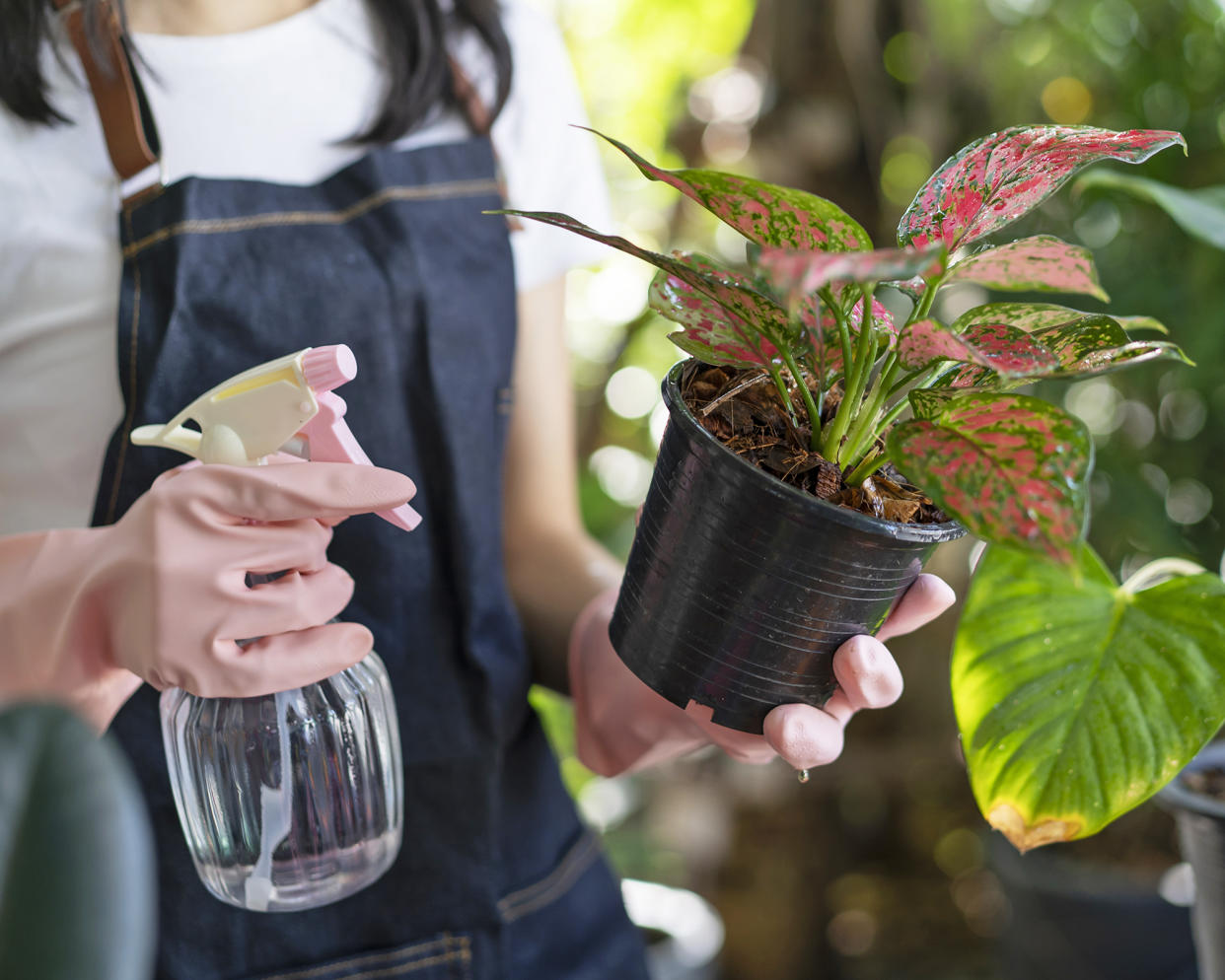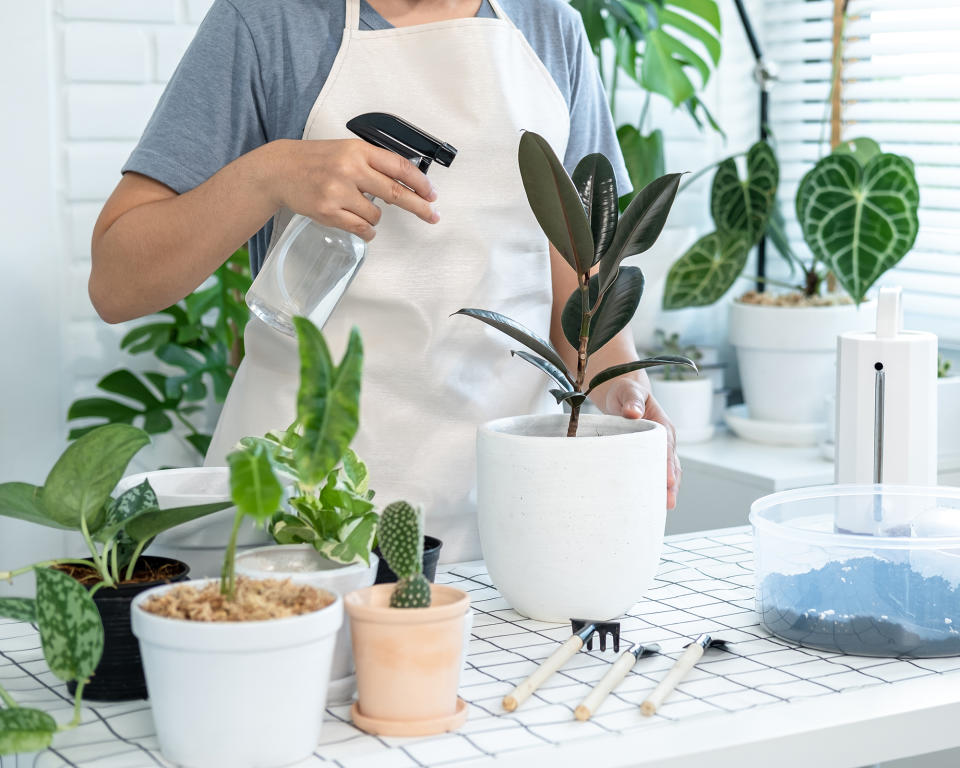My DIY Houseplant Spray Fertilizes, Repels Pests, and Even Conditions Leaves – Here's My Recipe

Misting is a popular method of increasing humidity for houseplants and supplementing their regular watering regime.
Many houseplants originate from tropical regions, and so thrive on humidity. While overwatering houseplants can lead to root rot, misting is a gentler way to help retain moisture levels
However, by adding a few simple household ingredients to the water, you can easily create a foliar spray that contributes to feeding plants, repelling pests, and cleaning leaves.
Some experts argue that the effect of misting houseplants only gives them a temporary uplift in moisture levels, and is not an essential part of their care.
However, in my experience, many houseplants thrive when misted regularly. So, for me, it was a natural next step to use the misting water to deliver an extra dose of fertilizer and pest repellent.
Foliar sprays allow you to apply fertilizer to plants much more quickly than application through the roots. However, the solution should generally be more diluted than when applied through soil.
Not all houseplants should be misted – particularly those with hairy leaves, such as African violets, and cacti and succulents that thrive in dry environments. However, most leafy plants will benefit from being misted once or twice a week.
My natural houseplant foliar spray recipe
It takes just a few minutes to mix up my foliar spray, and I keep the ingredients stored in the pantry.
I start with a base of filtered tap water that has been allowed to off-gas. This minimizes chemicals and reduces the chance of limescale build-up on leaves. Alternatively, you could use rainwater.
To this, I add blackstrap molasses, a syrup that's a byproduct of sugarcane production. It's widely used to flavor sweet treats such as gingerbread, as well as adding depth to savory dishes such as baked beans and barbequed meats.
Molasses is full of vitamins and minerals, such as manganese, magnesium, copper, calcium, iron, and potassium, and has long been used to fertilize plants.
You should dilute molasses at a ratio of 1-2 tablespoons per gallon of water. I just add a teaspoon to a spray bottle filled with water.
Next, I crush up a clean, dry egg shell as finely as possible and add that to the water. Egg shells provide an extra dose of organic calcium, and most of us have a ready supply of them.
Finally, I add a few drops of essential oil – this imparts scent, deters pests, helps to treat fungal disease, and even gives the leaves a little shine.
Neem oil is a particularly good pest deterrent, but other essential oils also work well, such as lavender and rosemary.
Finally, I give the bottle a good shake, wait a few hours, then get to work misting my indoor jungle.
It’s safe to use the foliar spray once a week. However, if you would like to use it more regularly, then halve the dose of ingredients.

Other ingredients to try
Why not experiment with adding other ingredients to your homemade foliar spray?
Once in a while – every month or two – I add a teaspoon of epsom salts to my spray. The salts are an excellent source of magnesium sulphate, and generally help to balance nutrient levels, and neutralize soil pH levels.
If the leaves on your plants are yellowing, and the veins are green, then this indicates a magnesium deficiency. Epsom salts will do wonders to balance this.
However, you do have to tread carefully as overuse of epsom salts can cause a harmful salt buildup.
I have also tried adding a diluted solution of used coffee grounds to my foliar spray, which boosts nitrogen levels. This may be worth trying if your plants are leafy and don’t produce flowers.
You can also make a herb or weed tea, although this takes a bit longer and can smell unpleasant.
Do I still need to fertilize the soil?
Using a foliar spray has many benefits, and allows you to enjoy being in close contact with your houseplants. However, it complements, rather than replaces, fertilizing them.
There is no need to spend any money, though. There are many highly effective fertilizers that can be found in the kitchen – from bananas to gelatin.
My favorite tip for both watering and fertilizing houseplants is to use (unsalted) cooking water from vegetables or pasta – it’s packed with nutrients, such as phosphorus, nitrogen, iron, and calcium.
Simply allow it to cool down and use it in place of regular water.
Happy plant parenting!